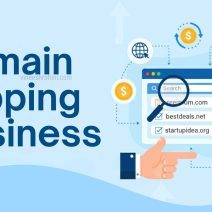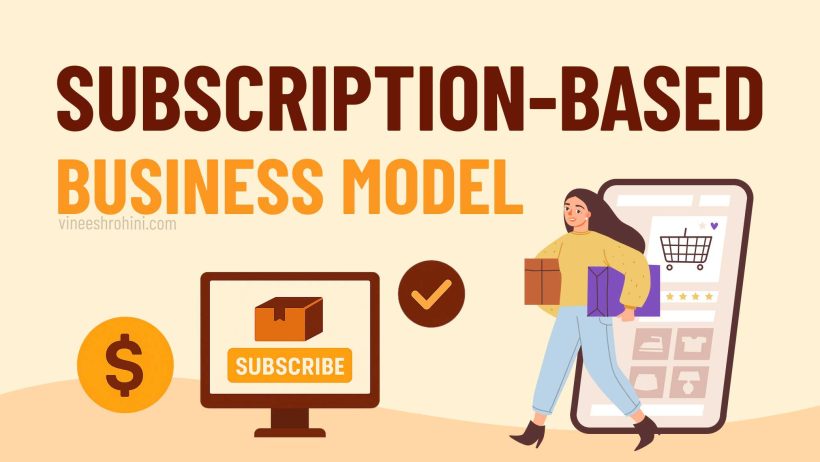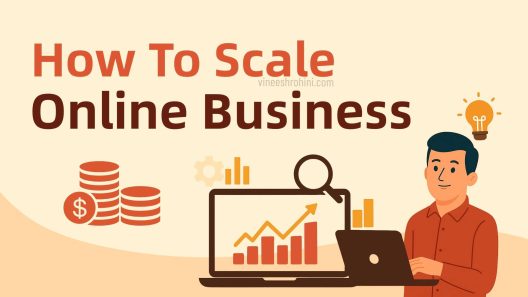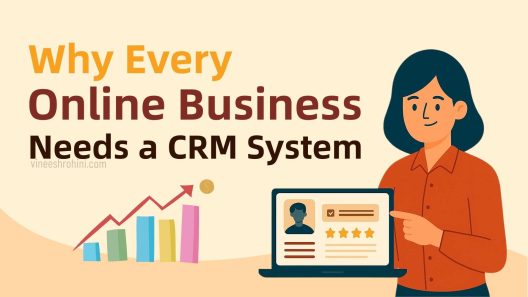Subscription-Based Business : The subscription-based business model has transformed how consumers interact with products and services, reshaping industries and creating sustainable revenue streams for entrepreneurs and established companies alike. In 2025, this model is not only relevant but is evolving rapidly with technological advancements, changing consumer behavior, and the rise of digital-first businesses. For small businesses, startups, and even established enterprises, subscription-based models present opportunities to build loyal customer bases, predictable income, and scalable growth. To understand why these models work so effectively in 2025, it’s important to examine their history, benefits, challenges, and the specific industries where they thrive.
Table of Contents
The Rise of Subscription-Based Models in the Digital Economy

The concept of subscriptions isn’t new. Traditionally, newspapers, magazines, and cable television worked on subscription formats. However, the digital revolution expanded this model into nearly every industry. Streaming giants like Netflix, music platforms like Spotify, software companies such as Adobe, and e-commerce players like Amazon Prime popularized subscription-based approaches. Today, subscriptions extend far beyond entertainment and media; they touch fitness, food delivery, SaaS (software as a service), personal care, education, fashion, and even automobiles.
Also Read : Passive Income Ideas for Online Entrepreneurs – Comprehensive Guide 2025
By 2025, the global subscription economy is expected to surpass trillions in value as more businesses adopt recurring revenue models. Consumers increasingly prefer access over ownership. They would rather pay for ongoing usage of products or services than bear the full upfront cost. This mindset shift has created fertile ground for subscription-based business models across sectors.
Why Subscription-Based Models Work in 2025
1. Predictable Revenue and Stability
One of the biggest reasons businesses adopt subscription models is predictable income. Unlike one-time sales, subscription businesses generate recurring revenue, providing financial stability and cash flow consistency. This allows for better forecasting, investment in growth strategies, and resilience during economic fluctuations.
2. Customer Loyalty and Long-Term Relationships
Subscriptions help businesses build stronger, long-term relationships with customers. When customers commit to a subscription, they engage with the brand regularly, creating familiarity and trust. This loyalty reduces churn and increases lifetime value (LTV).
3. Affordability and Accessibility for Customers
Subscriptions lower the barrier to entry by offering products and services in smaller, manageable payments rather than large upfront costs. For example, instead of paying hundreds for premium software, customers can subscribe for a monthly fee. This accessibility increases adoption rates and customer satisfaction.
4. Personalization and Enhanced User Experience
Modern subscription models often include personalization features. AI-driven recommendations, curated boxes, and adaptive services keep customers engaged and feeling valued. Businesses in 2025 use advanced analytics to refine offerings, making the customer experience seamless.
5. Scalability and Global Reach
Subscriptions are inherently scalable. Digital services, especially SaaS platforms, can accommodate global audiences without requiring significant infrastructure. This scalability means businesses can expand rapidly and diversify revenue streams.
Types of Subscription-Based Business Models in 2025

1. SaaS (Software as a Service) Subscriptions
SaaS remains one of the most profitable subscription-based business models in 2025. From small businesses to enterprises, companies rely on SaaS tools for project management, communication, marketing automation, accounting, and more. Giants like Microsoft 365, Zoom, and Slack continue dominating the space, but niche SaaS tools are gaining traction as well.
Why it works in 2025:
- Affordable pricing tiers.
- Easy cloud access across devices.
- Regular updates without additional charges.
Examples:
- Project management tools like Asana and Monday.com.
- CRM platforms like HubSpot and Zoho.
- Marketing automation tools like Mailchimp.
2. Streaming Services (Entertainment Subscriptions)
The entertainment industry has completely shifted to subscription-based models. In 2025, video streaming services, music platforms, and even gaming subscriptions dominate digital entertainment. Platforms like Netflix, Disney+, Spotify, and Xbox Game Pass thrive by continuously offering fresh content.
Why it works in 2025:
- Unlimited access at an affordable monthly price.
- Exclusive content keeps subscribers loyal.
- Content personalization driven by AI.
Examples:
- Netflix, Amazon Prime, Hulu (video).
- Spotify, Apple Music, YouTube Music (audio).
- Xbox Game Pass, PlayStation Plus (gaming).
3. Subscription Boxes
Subscription boxes remain popular in 2025 as customers enjoy curated experiences delivered to their doorstep. From beauty boxes to meal kits, pet supplies, and wellness products, these businesses continue to thrive.
Why it works in 2025:
- Surprise and delight factor.
- Personalization based on customer preferences.
- Convenience and discovery of new products.
Examples:
- Birchbox (beauty products).
- HelloFresh (meal kits).
- BarkBox (pet supplies).
Buy Now : Ecommerce Website
4. E-Learning & EdTech Subscriptions
The rise of online education has given birth to subscription-based e-learning platforms. In 2025, individuals prefer monthly or yearly access to skill-based courses, certifications, and learning resources.
Why it works in 2025:
- Affordable and flexible learning.
- Constantly updated curriculum.
- Access to industry experts and mentors.
Examples:
- MasterClass, Coursera Plus, Udemy Pro.
- LinkedIn Learning.
- Skillshare.
5. Fitness & Health Subscriptions
Health-conscious consumers in 2025 rely on fitness apps, online workout subscriptions, and wellness programs. Digital fitness has become mainstream, and hybrid models (combining online and offline) are gaining popularity.
Why it works in 2025:
- Convenience of exercising at home or on the go.
- AI-powered health tracking and recommendations.
- Affordable compared to traditional gyms.
Examples:
- Peloton, FitOn, MyFitnessPal Premium.
- Calm, Headspace (mental wellness).
6. E-commerce Membership Programs
E-commerce companies have adopted subscription models to retain customers. Amazon Prime set the standard, but now, smaller businesses also offer premium memberships with benefits like free delivery, early access, and discounts.
Why it works in 2025:
- Value-driven membership perks.
- Encourages repeat purchases.
- Enhances customer loyalty.
Examples:
- Amazon Prime, Walmart+, Flipkart Plus.
7. Digital Media & Newsletter Subscriptions
In 2025, independent creators, bloggers, and digital media houses thrive on subscription models. Instead of depending only on ads, they offer premium content, paid newsletters, or exclusive communities.
Why it works in 2025:
- Audiences are willing to pay for high-quality content.
- Builds niche communities around interests.
- Recurring income for creators.
Examples:
- Substack, Patreon, Medium Membership.
8. Financial Services Subscriptions
Even financial services are adopting subscriptions. Budgeting apps, stock analysis tools, and AI-driven wealth management services run on monthly or yearly fees.
Why it works in 2025:
- Provides affordable financial advice.
- Data-driven decision-making support.
- Replaces expensive one-time consultancy fees.
Examples:
- Mint Premium, TradingView Pro, Wealthfront.
9. Food & Beverage Subscriptions
Beyond meal kits, coffee and beverage subscriptions are trending in 2025. Customers love receiving high-quality coffee blends, wines, or organic products on a subscription basis.
Why it works in 2025:
- Convenience and quality assurance.
- Appeals to niche audiences like coffee lovers.
- Encourages repeat loyalty.
Examples:
- Blue Bottle Coffee, Winc Wine Club, Daily Harvest.
10. Hybrid Subscription Models
Hybrid subscription models combine physical products with digital experiences. For instance, a fitness equipment subscription that includes access to online workout videos. This approach is booming in 2025 as it merges convenience with engagement.
Challenges of Subscription-Based Business Models

Despite their popularity, subscription models are not without challenges:
- High Churn Rates: Retaining customers is more important than acquiring them. If value isn’t consistently delivered, subscribers cancel.
- Subscription Fatigue: With so many options available, customers may feel overwhelmed and reduce the number of subscriptions they maintain.
- Operational Costs: Shipping, personalization, and technology costs can eat into profits for certain subscription services.
- Regulatory Issues: Businesses must comply with subscription transparency laws to avoid disputes over hidden charges.
How Businesses Can Succeed with Subscription Models in 2025
- Focus on Value Delivery: Ensure that customers perceive value every billing cycle.
- Personalization and AI Integration: Use AI to deliver curated content, products, or services.
- Flexible Pricing Plans: Offer tiers that cater to different budgets and needs.
- Strong Onboarding Process: Make the first experience seamless and engaging.
- Continuous Engagement: Regularly update offerings to keep customers excited.
- Data-Driven Insights: Use analytics to predict churn and improve retention strategies.
- Sustainability and Social Impact: Modern consumers, especially Gen Z, prefer subscriptions aligned with ethical and sustainable values.
Future Trends in Subscription Businesses
By 2025, the subscription model is evolving with these emerging trends:
- AI-Powered Hyper-Personalization: Subscriptions will increasingly use AI to tailor recommendations, bundles, and even pricing.
- Bundled Ecosystems: Businesses will partner to offer all-in-one subscriptions, such as fitness + nutrition + wellness.
- Blockchain Integration: Subscription services may use blockchain for secure, transparent transactions and decentralized ownership.
- Freemium to Premium Pipelines: Businesses will attract customers with free versions, then upsell premium subscriptions.
- Sustainability as a Value Proposition: Eco-friendly and ethical subscriptions will become a differentiator.
Conclusion

Subscription-based business models continue to dominate the digital economy in 2025, offering entrepreneurs and small businesses a sustainable way to build recurring revenue, strengthen customer loyalty, and scale efficiently. From SaaS tools to curated boxes, e-learning platforms, streaming services, and niche memberships, the subscription economy thrives on convenience, personalization, and consistent value delivery. However, success in this model requires careful planning, innovation, and constant adaptation to customer preferences.
Buy Now : Ecommerce Website
Businesses that focus on offering genuine value, transparent pricing, and seamless customer experiences are most likely to thrive in this competitive space. As the subscription economy continues to expand, 2025 offers more opportunities than ever for businesses to embrace this model and achieve long-term growth.
Disclaimer
The information in this article is intended for educational and informational purposes only. It does not constitute business, financial, or legal advice. Readers are encouraged to conduct their own research or consult with professional advisors before making decisions related to subscription-based business models or investments.








